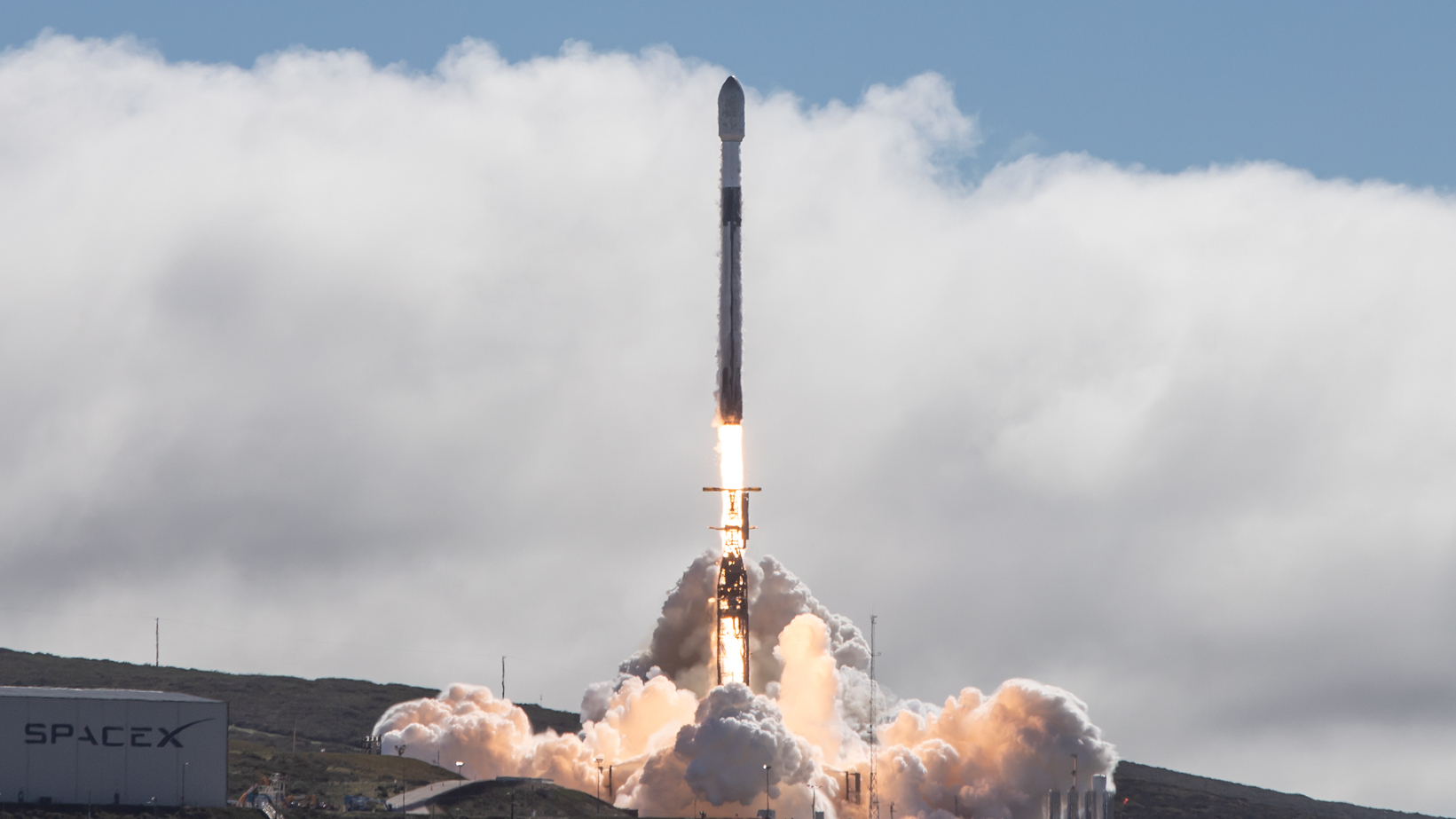SpaceX launched 22 more of its Starlink internet satellites on Thursday (Feb. 15), the third mission in less than 24 hours for the company.
A Falcon 9 rocket carrying 22 Starlink spacecraft lifted off from Vandenberg Space Force Base in California on Thursday at 4:34 p.m. EST (1:34 p.m. local California time, or 2134 GMT).
The Falcon 9's first stage came back to Earth about 8.5 minutes after liftoff as planned. It made a vertical landing on the SpaceX droneship Of Course I Still Love You, which was stationed in the Pacific Ocean.
Related: Starlink satellite train: How to see and track it in the night sky

It was the second launch and landing for this particular booster, according to a SpaceX mission description. Its previous flight was also a Starlink mission.
The rocket's upper stage, meanwhile, continued powering its way skyward, eventually deploying the satellites into low Earth orbit.
The Starlink launch was the final leg of a spaceflight tripleheader for SpaceX. On Wednesday evening (Feb. 14), the company launched the classified USSF-124 mission for the U.S. Space Force.
Get the Space.com Newsletter
Breaking space news, the latest updates on rocket launches, skywatching events and more!
Then, at 1:05 a.m. EST (0605 GMT) on Thursday, SpaceX launched the private IM-1 moon-landing mission from NASA's Kennedy Space Center.
Join our Space Forums to keep talking space on the latest missions, night sky and more! And if you have a news tip, correction or comment, let us know at: community@space.com.

Michael Wall is a Senior Space Writer with Space.com and joined the team in 2010. He primarily covers exoplanets, spaceflight and military space, but has been known to dabble in the space art beat. His book about the search for alien life, "Out There," was published on Nov. 13, 2018. Before becoming a science writer, Michael worked as a herpetologist and wildlife biologist. He has a Ph.D. in evolutionary biology from the University of Sydney, Australia, a bachelor's degree from the University of Arizona, and a graduate certificate in science writing from the University of California, Santa Cruz. To find out what his latest project is, you can follow Michael on Twitter.









